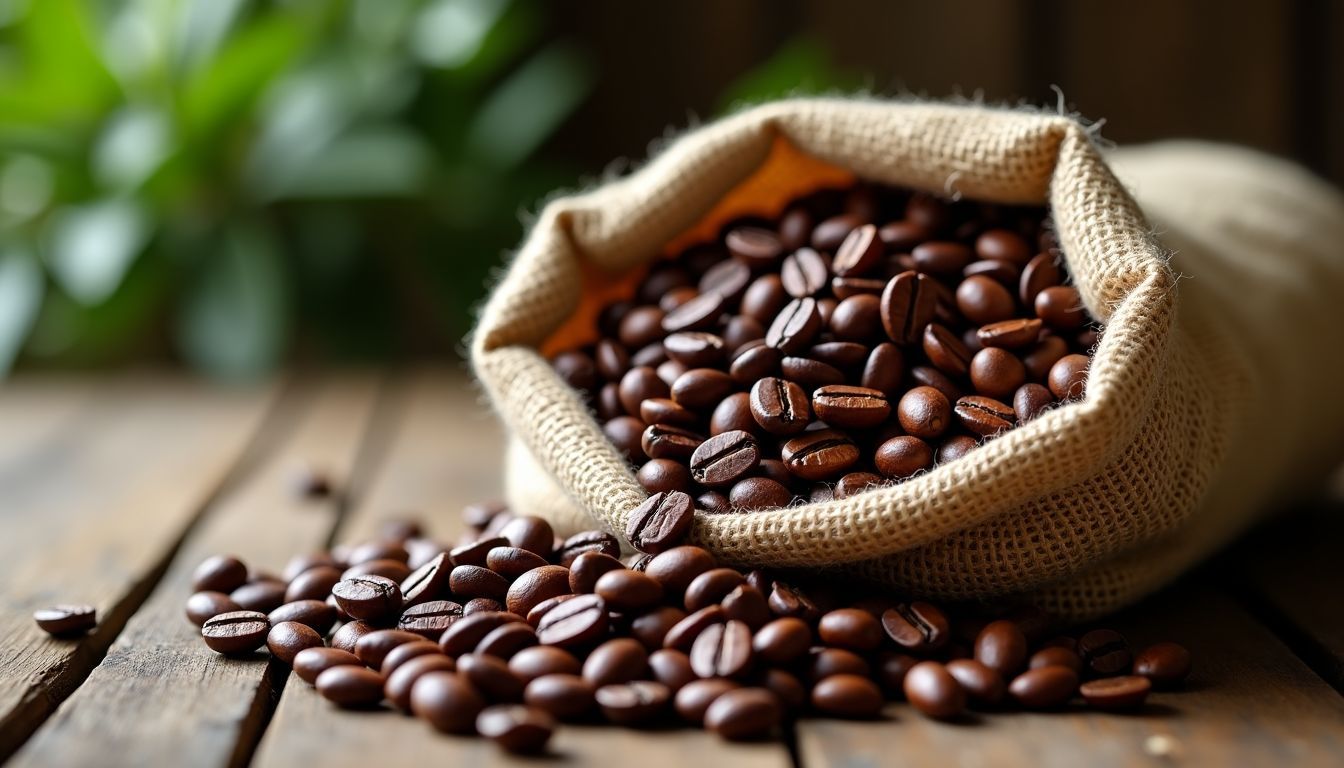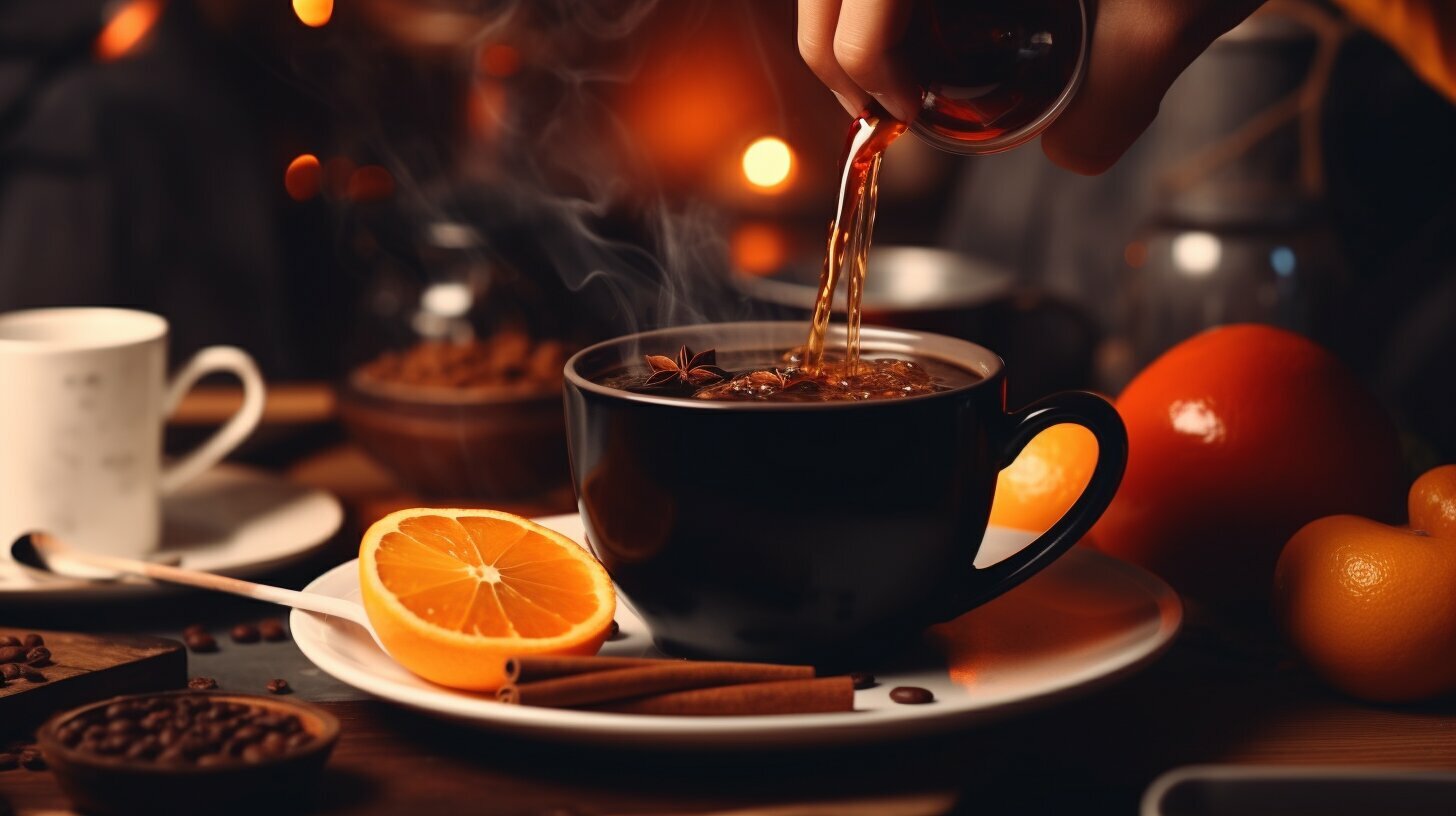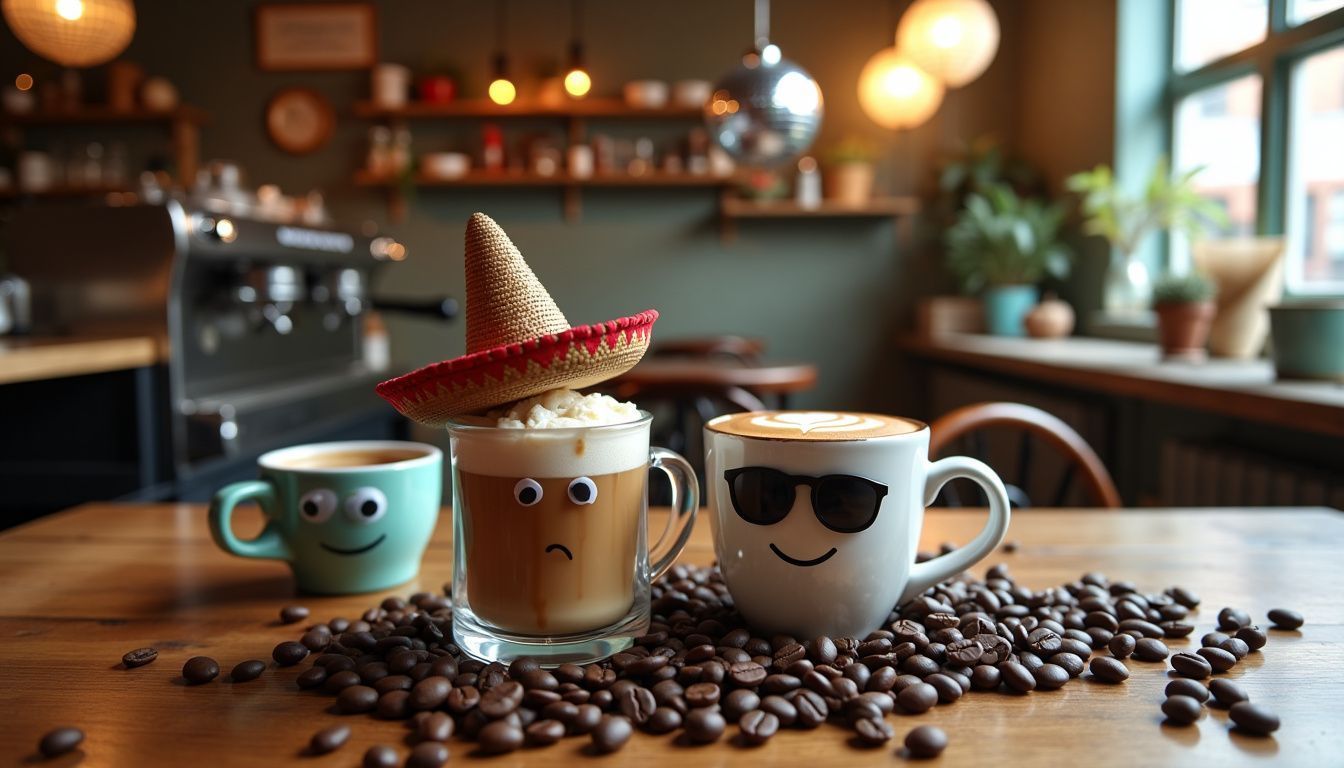Blog
Are Bigger Coffee Beans Better?
You might have heard that bigger coffee beans mean better flavour. But, is this true? Let’s clear up the confusion. Big or small, coffee beans come with their own stories. Some say larger beans from high mountains offer richer tastes.
Yet, it’s not just about size. The quality also depends on where and how the bean grows.
High-quality coffee follows certain rules set by experts like the Specialty Coffee Association (SCA). They look at many things, not just bean size, to decide if a coffee is good or not.
Around the world, countries use different ways to grade their beans by size – like “New York” for Brazil and AA/AB for Africa.
Why does this matter when making your morning cup? Well, grinding these beans right affects taste big time! Whether you love French press or espresso tells you how fine or coarse your grind should be.
And yes, bigger beans might need special grinding settings.
Keep in mind; success in brewing a perfect cup lies in understanding these differences. Ready to learn more? Keep reading to become your own expert on what bean size means for your coffee game.
Debunking the Myth: Are Larger Coffee Beans of Superior Quality?

Many people think bigger coffee beans mean better taste. This isn’t always true. Big beans, like those from high places above 1000 metres, can have rich smells and tastes. Yet, not all large beans are the best quality.
Some countries label their big beans with special names for selling more than for showing they are the best.
For example, Colombia calls its big coffee beans “Supremo” and Kenya uses “AA” to show size but this doesn’t always tell you about the quality. So, when choosing coffee, don’t just look at bean size.
Taste matters more than how big the bean is.
Exploring How Coffee Bean Size Influences Flavour
Coffee bean size directly affects the taste of your coffee. Small beans have more surface area when ground, compared to bigger ones. This means if you grind small and big beans the same way, water will move through the small grounds faster.
Your brewing method needs the right size of grounds to get a good flavour. The wrong match can make your coffee bitter or sour.
Grind size changes how your coffee tastes because of water contact time. Fine grinds slow down water, letting it pull out more flavour from the coffee. Coarse grinds do the opposite; they let water flow quickly and catch less taste.
So, picking bean sizes that match with how fine or coarse you plan to grind them is key for a delicious cup every time.
The Relationship Between Coffee Bean Size and Roasting Techniques

Different sizes of coffee beans roast at different rates. Smaller beans may roast faster than larger ones. This means that if you mix bean sizes, some could burn while others are just right.
Roasters use screens to sort beans by size to make sure each batch roasts evenly.
The way a bean is roasted affects its flavour in your cup of joe. For example, lighter roasts keep more original flavours from the bean’s origin. Darker roasts have a stronger taste because the longer cooking brings out oils and changes the bean’s sugar structure.
Knowing this helps you choose the right grind size for your brewing method – fine grinds for espresso or coarse for cold brew.
Coffee Bean Size Considerations for Optimal Grinding
Choosing the right size for your coffee beans before grinding is key. Large coffee beans can lead to a more consistent grind. You need this consistency for a great tasting cup of coffee.
Your grinder plays a big role here. A high quality burr grinder works best with these large beans.
Different coffees need different grinds, depending on where they come from and how they’re made. The Kruve Sifter helps by sorting the grinds into exact sizes, measured in microns.
This tool lets you adjust the grind perfectly for any kind of coffee, making sure every brew tastes its best. Keep in mind that an uneven grind could change the taste by up to 1,000%.
So getting it right matters a lot for flavour.
Coffee Bean Grading: The Importance of Size
Grading coffee beans by size is key. Sieves sort them well. These sieves have holes measured in inches. One inch equals 64 sizes. This method helps find the sieve measure of coffee beans.
The Specialty Coffee Association of America (SCAA) says a 5% variance is okay when classifying beans.
Countries use different systems to grade bean size. Brazil uses the “New York” system. African coffees might be AA or AB graded. SUPREMO and ALTURA are names for sizes too. Size affects how uniformly green beans roast, making quality better.
Your coffee tastes better when beans are graded this way. It assures each cup has consistent quality and flavour, especially with fresh ground coffee from high quality arabica or robusta beans made at home or in your favourite coffee shop.
Diverse Perspectives on Coffee Bean Size
Everyone thinks differently about coffee bean size. Some say big beans give better taste; others believe small beans pack more flavour. Factors like where the bean grows, and how people make it into coffee, play a big role.
There’s a lot to learn here—like why some prefer espresso from finely ground small beans and others love coarse grounds for their morning drip brew. If you’re curious to see how bean size changes your cup, keep reading!
Factors Influencing Coffee Bean Size
Coffee bean size changes based on several conditions. These factors decide if the bean ends up big or small before it makes its way to your coffee grinder.
- Plant Variety: The type of coffee plant matters a lot. Arabica beans, from plants like Coffea arabica, usually grow larger than Robusta beans from the Coffea canephora plant.
- Growing Conditions: Beans get bigger or stay smaller due to where and how they grow. Altitude plays a big role; beans grown at high altitudes in countries like Ethiopia and Guatemala often end up larger because they mature more slowly.
- Temperature: Not too hot, not too cold is key for big coffee beans. If it’s too warm or too chilly, the bean won’t grow properly.
- Soil Type: Nutrient-rich soil means healthier plants and potentially larger beans. Soil types in Central America contribute to the growth of high-quality coffee cherries.
- Rainfall: Coffee plants need just the right amount of water to help their beans grow big. Too much or too little rain can affect bean size.
- Processing Method: After picking, how the cherries are processed also affects bean size—dried with pulp on tends to yield larger sizes than washed process.
- Sorting Techniques: Special sieves sort beans by size after drying and before shipping. This ensures uniformity in batches of brewed coffee.
- Market Pricing and Grading Systems: Larger beans fetch higher prices and receive better grades because they’re seen as higher quality by experts, affecting how farmers approach growing and harvesting practices.
Use these facts next time you’re choosing between different sized coffee beans for your morning brew or when selecting grounds for your coffee machine or grinder at home, making sure you enjoy that perfect cup every time.
Coffee Bean Size Classifications Explained
Coffee beans come in different sizes. People measure these sizes with a method called the sieve technique. This uses sieves with holes measured in 64ths of an inch. Smaller beans fall through bigger holes, and this sorts them by size.
The Specialty Coffee Association (SCA) has rules about which coffee beans are the best based on size among other things.
The size of a bean can tell you a lot before you even taste it. Larger beans often come from high areas and get better prices in the market. They suggest that the coffee could be special because they grew well.
Roasters like knowing bean sizes ahead of time so they can guess how good the coffee might be before they get samples to try out.
How Bean Size Affects Different Brewing Methods
Bean size makes a huge difference in brewing your coffee. Each brewing method needs a specific size to taste its best.
- Espresso loves fine grinds from small beans. The high pressure of an espresso machine can extract all the flavours quickly.
- French press requires coarse grains, similar to sea salt, from larger beans. It lets water soak with the coffee longer without getting bitter tastes.
- For drip coffee makers, medium-sized beans ground to a texture like beach sand work best. This guarantees even water flow and extraction.
- Cold brew asks for extra coarse grounds from big beans. Coarse grains prevent over-extraction, keeping your drink smooth over long steeping times.
- Tamping down espresso needs a very fine grind from smaller beans to avoid water channels through the puck, guaranteeing an even flavour extraction.
- Brewing methods like AeroPress benefit from medium-fine grinds that come from medium-sized beans, balancing quick extraction with flavour depth.
- Burr mills are key for exact grinding sizes critical for each brewing style; they offer consistency that blade grinders don’t.
- Siphon brewers do well with a medium grind from mid-sized beans, offering a balance between taste clarity and extraction speed.
Selecting the right bean size directly impacts your coffee’s quality and taste across different brewing styles, making it critical to match them correctly for the ideal cup every time.
Evaluating the Advantages and Disadvantages of Larger Coffee Beans

Evaluating the advantages and disadvantages of larger coffee beans is significant when selecting your next batch. Larger beans may look appealing, but size influences more than just appearance. Let’s break down the pros and cons.
| Advantages | Disadvantages |
|---|---|
| 1. Larger beans often mean a coarser grind is achievable. This can enhance certain brewing methods, allowing for a richer extraction. | 1. A coarser grind from larger beans may lead to quicker water passage, potentially under-extracting the coffee and resulting in a weaker brew. |
| 2. In some cases, larger beans have undergone a more detailed sorting process, which can signal higher quality. | 2. Inconsistencies in grind size can emerge, especially as grinding equipment wears down. This results in unpredictable tastes and quality. |
| 3. The visual appeal of larger beans can add to the coffee experience, making your morning cup feel more luxurious. | 3. Smaller beans, such as peaberries, often pack unique and impressive flavours that larger beans might lack. |
| 4. Roasting large beans might allow for a more uniform roast, contributing to a balanced flavour profile. | 4. Specialised roasting techniques are required for larger beans to ensure even heat distribution. Not all roasters are equipped for this. |
When choosing between large and small coffee beans, consider your brewing method and flavour preferences. Grinding consistency significantly impacts the extraction process and, ultimately, your cup’s taste. Remember, larger beans require a coarser grind which suits specific brewing techniques. On the other hand, the quick water passage might not extract all the flavours you’re after.
While larger beans might indicate quality through their detailed selection process, don’t overlook smaller beans like peaberries. Their unique tastes defy their size, offering a rich coffee experience. Equipment wear and the need for specialised roasting are potential downsides, suggesting that the best choice varies based on individual needs and equipment capability.
To sum up, weigh these factors carefully. Your perfect coffee experience might just depend on it.
Selecting the Ideal Coffee Bean Size: Practical Tips

Choosing the right size of coffee beans can make a big difference in your brew. Different sizes suit different brewing methods, giving you the best flavour.
- Know your brew method: Espresso requires fine grounds, whereas French press needs coarse.
- Aim for consistency: Evenly sized beans roast and grind more uniformly.
- Use a high-quality grinder: Check that it can adjust to produce the desired grind size.
- Look for size classification on the package: Beans are often sorted by screens ranging from size 8 to 20.
- Think about the roast level: Lighter roasts tend to be larger; darker roasts shrink but intensify in flavour.
- Experiment with single origin beans: They offer unique tastes and tend to have more uniform sizes.
- Pay attention to extraction times: Adjust grind size if your coffee tastes too bitter (over-extracted) or too sour (under-extracted).
- Store beans properly: Keep them in a cool, dry place to maintain their size and quality.
- Choose freshly roasted coffee for grinding at home: Freshness impacts the coffee’s density and how it grinds.
- Practice makes perfect: Try different bean sizes and note which ones work best for your preferred brewing method.
By following these steps, you’ll improve your coffee game, making every cup closer to perfection.
FAQs
Why does the size of a coffee bean matter?
Well, the size affects how your coffee tastes. Bigger beans, like those from Colombia or single-origin Arabica, often mean better quality. When you grind them, they release more flavour.
Is grinding your own coffee worth it?
Grinding at home lets you control the grind size—important for the taste of your brew. Whether it’s coarse ground for a French press or fine for an espresso, you decide.
Do different brewing methods need different grind sizes?
Yes, they do. For instance, espresso needs a finer grind; something like powder… Whereas, if you’re making coffee in a drip brewer, go for medium ground.
What’s special about peaberry beans?
Peaberry beans are unique – they’re small and round because only one bean forms inside the cherry instead of two. They’re said to pack more flavour and are perfect for speciality coffees.
Can bigger beans take longer to roast?
Larger beans might need more time in the roaster to get just right compared to their smaller counterparts. It’s all part of ensuring that high-quality cuppa!!
Conclusion
You now know bigger coffee beans often mean better flavour. They grow at high altitudes, bringing out rich tastes. But size isn’t everything. The way you grind and roast them matters too.
For the best experience, pick beans that suit your brewing method. You’ll enjoy great coffee every time by following these steps.



